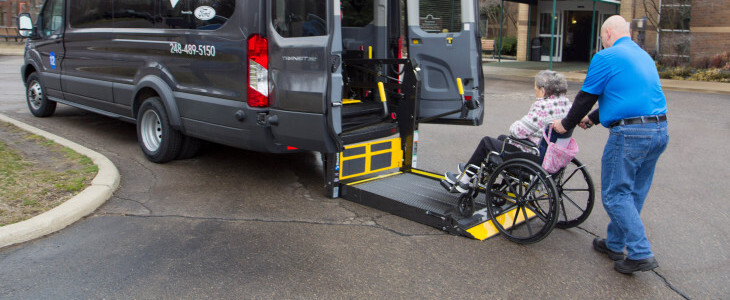Inexpensive and Accessible Medical Transportation Options for each Circumstance
In the world of healthcare, the capability to access clinical solutions is paramount, yet the challenge of affordable and easily accessible transport can usually hinder individuals from receiving required care. By exploring specialized clinical transportation services, neighborhood transportation programs, ride-sharing and taxi services, non-emergency clinical transportation, as well as public transit and paratransit choices, individuals can find methods that provide to their particular needs and guarantee they receive the care they require.
Specialized Medical Transportation Services
Specialized clinical transport services play a crucial function in guaranteeing safe and efficient transport for individuals requiring specialized treatment during transportation. These services accommodate clients with unique clinical needs, such as those requiring continuous surveillance, specific tools, or medical treatments during transportation. By utilizing particularly equipped automobiles and qualified clinical employees, specialized medical transportation services guarantee that people receive the needed treatment while being carried between health care centers, homes, or other places.
One trick facet of specialized medical transportation solutions is the emphasis on person comfort and safety. Medical transport teams are educated to manage numerous clinical problems and emergency situations that might arise during transit, providing a higher degree of care than traditional transportation options. Additionally, these services frequently offer door-to-door assistance, reducing the tension and discomfort that clients may experience during transfers.
Neighborhood Transportation Programs
Having actually dealt with the important function of specific medical transportation services in making sure secure and effective transportation for individuals with special clinical demands, the focus currently moves to examining Neighborhood Transport Programs - medical transportation. These programs play an essential function in supplying inexpensive and obtainable transport options for the general population, including elders, individuals with handicaps, and low-income families who may face challenges in accessing traditional transportation choices
Neighborhood Transport Programs encompass a variety of services such as fixed-route buses, paratransit solutions, volunteer driver programs, and ridesharing campaigns. These programs are typically supported by local federal governments, non-profit organizations, or private companies to guarantee that people have trustworthy transport alternatives to get to medical visits, food store, social tasks, and other essential locations.
Ride-Sharing and Taxi Services

Among the vital advantages of ride-sharing and taxi services is their accessibility. These services operate 24/7, allowing individuals to travel to medical appointments, pharmacies, or health centers any time of the day. Furthermore, ride-sharing and taxi services accommodate individuals with mobility challenges by providing wheelchair-accessible lorries upon demand.
In addition, ride-sharing and taxi solutions can be specifically useful for individuals staying in areas with minimal mass transit options. By linking the gap in between home and health care facilities, these solutions play a crucial function in guaranteeing that everyone has access to essential medical services.
Non-Emergency Medical Transportation

Non-Emergency Medical Transport service providers go to the website normally utilize trained workers who are experienced in helping individuals with varying medical needs (medical transportation). These experts make certain that people are securely delivered to their destinations in a prompt way, resolving any type of specific demands or clinical devices necessary during the trip. By using door-to-door service, Non-Emergency Medical Transportation my response improves the total accessibility of health care for people who might otherwise have a hard time to participate in vital clinical consultations. In general, these services contribute substantially to boosting medical care end results by facilitating the seamless transport of people to non-urgent clinical facilities.
Public Transportation and Paratransit Options
Public transit and paratransit alternatives supply essential transport services for people with differing mobility requirements, guaranteeing accessibility to crucial locations such as medical centers and appointments. Public transit systems, including buses, trains, and subways, offer an affordable and extensively offered setting of transport for individuals looking for to get to clinical consultations. These solutions are specifically useful for those who might not have access to personal vehicles or need aid due to flexibility obstacles.
Paratransit solutions cater specifically to individuals with specials needs that are incapable to use typical public transport. These solutions supply door-to-door transport, accommodating people with mobility devices, pedestrians, or other movement aids. Paratransit vehicles are outfitted with functions such as mobility device ramps and securement systems to make certain the risk-free and comfortable transportation of guests with varying mobility demands.

Conclusion
